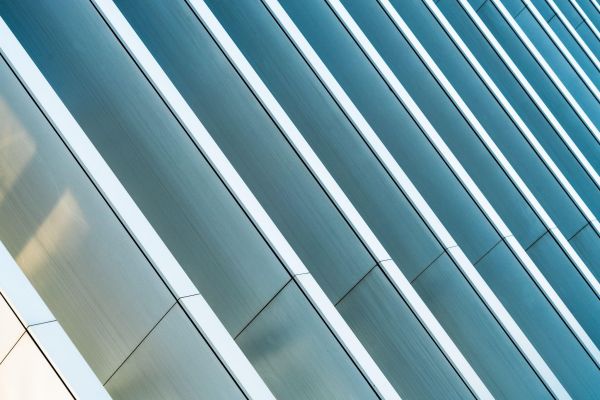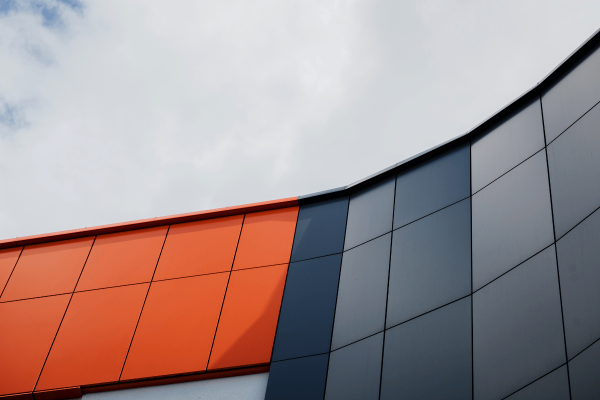Blog
How Long Does Aluminium Cladding Last?

Aluminium cladding has become a popular choice for buildings due to its durability and aesthetic appeal. If you're considering cladding for your property, it's essential to understand its lifespan. In this article, we'll explore the longevity of aluminium cladding, particularly in the context of East Africa.
Understanding Aluminium Cladding
Aluminium cladding is a protective and visually appealing exterior enhancement for buildings. It involves applying aluminium panels to shield structures from weather elements like rain and UV rays. Functionally, it safeguards the building, extending its lifespan and reducing maintenance needs. Aesthetically, the cladding transforms the appearance, adding a modern and sleek touch to the structure. This dual-purpose application not only ensures durability but also elevates the overall aesthetic appeal, making aluminium cladding a popular choice for enhancing both form and function in building design.
Durability of Aluminium Cladding
One of the primary reasons for the widespread use of aluminium cladding is its impressive durability. Aluminium is resistant to corrosion, rust, and other environmental factors. This durability ensures that the cladding maintains its structural integrity over an extended period.
Factors Influencing Lifespan
Aluminium cladding is a popular choice for buildings due to its durability and aesthetic appeal. However, its lifespan can be influenced by various factors. In this discussion, we will explore the key elements that impact how long aluminium cladding lasts.
Quality of Aluminium
The foundation of any durable structure lies in the quality of its materials. Similarly, the lifespan of aluminium cladding is heavily dependent on the grade and purity of the aluminium used. High-quality aluminium resists corrosion and weathering, contributing significantly to the longevity of the cladding.
Installation Practices
Proper installation is crucial for the performance and durability of aluminium cladding. Inadequate installation can lead to issues such as water infiltration and improper sealing, accelerating the degradation of the material. Employing skilled professionals and adhering to recommended installation practices can significantly extend the lifespan of the cladding.
Coating and Finishes
The application of protective coatings and finishes on aluminium cladding plays a pivotal role in safeguarding it from environmental elements. Coatings act as a barrier against corrosive substances, UV rays, and pollution. Regular maintenance, including reapplication of coatings, is essential to ensure the continued protection of the cladding.
Environmental Exposure
The environment in which the building is situated can greatly impact the lifespan of aluminium cladding. Harsh weather conditions, such as extreme heat, heavy rainfall, or constant exposure to salty air in coastal areas, can expedite the deterioration of the cladding. Buildings in such environments may require more frequent inspections and maintenance.
Maintenance Practices
Regular maintenance is a key factor in ensuring the prolonged lifespan of aluminium cladding. Cleaning the cladding to remove dirt, pollutants, and debris prevents the accumulation of corrosive substances. Periodic inspections allow for the early detection of any issues, enabling timely repairs and preservation of the cladding.
Proximity to Industrial Areas
Buildings located near industrial zones face additional challenges when it comes to the lifespan of aluminium cladding. Airborne pollutants and chemicals from industrial activities can accelerate corrosion. Implementing preventive measures, such as more frequent cleaning and protective coatings, can mitigate the impact of industrial pollutants.
Temperature Fluctuations
Extreme temperature variations can affect the structural integrity of aluminium cladding. Contraction and expansion of the material due to temperature changes may lead to the development of cracks or fissures. Choosing aluminium cladding designed to withstand temperature fluctuations and installing it with expansion joints can help mitigate these effects.
Structural Movement
Buildings are subject to natural movements caused by factors like settling, earthquakes, or even human activities within the structure. Such movements can affect the integrity of aluminium cladding over time. Ensuring that the cladding system is designed to accommodate structural movements can prevent damage and extend its lifespan.

Frequency of Inspection
Regular inspections are essential for identifying potential issues with aluminium cladding before they escalate. Timely detection allows for prompt repairs, preventing further damage and ensuring the longevity of the cladding. Establishing a routine inspection schedule is a proactive approach to maintaining the quality and performance of the cladding.
To Wind Up
When seeking a reliable and expert solution for aluminium cladding in East Africa, General International Group emerges as a trusted partner. With a commitment to quality, expertise in installation practices, and a proven track record in the region, General International Group ensures that your cladding needs are met with precision and durability. Choose General International Group for a dependable solution that withstands the test of time, protecting and enhancing the exteriors of your buildings in East Africa.